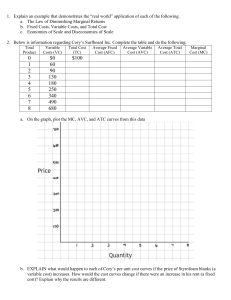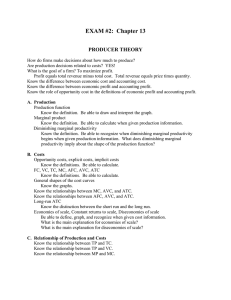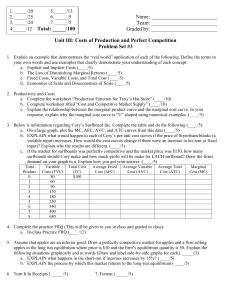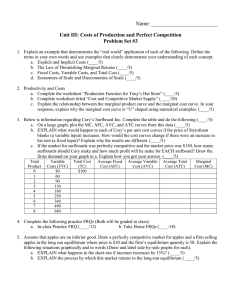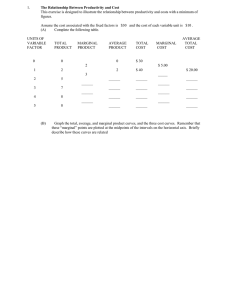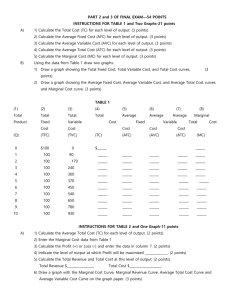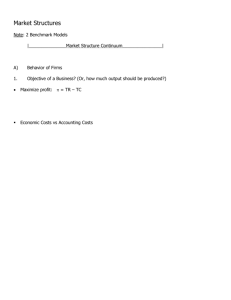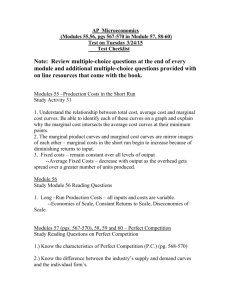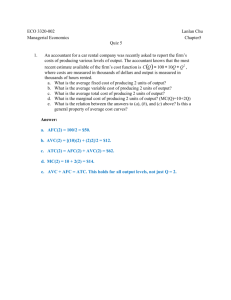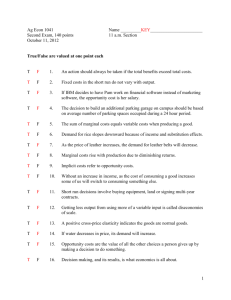Average Variable Costs: Understanding Cost Curves
advertisement
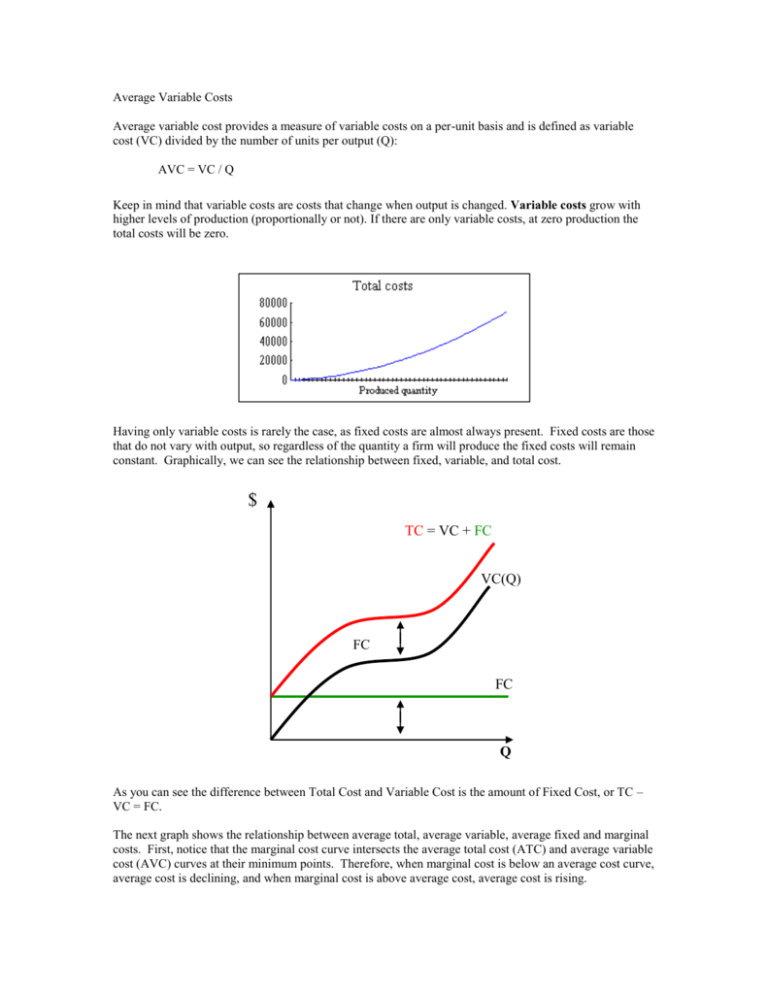
Average Variable Costs Average variable cost provides a measure of variable costs on a per-unit basis and is defined as variable cost (VC) divided by the number of units per output (Q): AVC = VC / Q Keep in mind that variable costs are costs that change when output is changed. Variable costs grow with higher levels of production (proportionally or not). If there are only variable costs, at zero production the total costs will be zero. Having only variable costs is rarely the case, as fixed costs are almost always present. Fixed costs are those that do not vary with output, so regardless of the quantity a firm will produce the fixed costs will remain constant. Graphically, we can see the relationship between fixed, variable, and total cost. $ TC = VC + FC VC(Q) FC FC Q As you can see the difference between Total Cost and Variable Cost is the amount of Fixed Cost, or TC – VC = FC. The next graph shows the relationship between average total, average variable, average fixed and marginal costs. First, notice that the marginal cost curve intersects the average total cost (ATC) and average variable cost (AVC) curves at their minimum points. Therefore, when marginal cost is below an average cost curve, average cost is declining, and when marginal cost is above average cost, average cost is rising. $ MC ATC AVC AFC Q For example, consider the number of bottles of wine a vintner can make over the course of many seasons. If, in one season, the vines do not produce as many grapes as usual fewer bottles than average will be produced, and the average number of bottles made will drop. On the other hand, if the crop is more robust than the average the next year more bottles of wine will be produced, thus increasing the average. Essentially, the number of bottles produced each year is the marginal contribution to the overall average. When the marginal is above the average, the average increases; when the marginal is below the average, the average decreases. Also, you will notice that the ATC and AVC curves get closer together as output increases. This is because the only difference in ATC and AVC is AFC, as mentioned before. Since average fixed costs decline as output is expanded the difference between average total and average variable costs diminishes as fixed costs are spread over increasing levels of output. http://www.economicswebinstitute.org/glossary/costs.htm http://hspm.sph.sc.edu/COURSES/ECON/Cost/Cost.html
